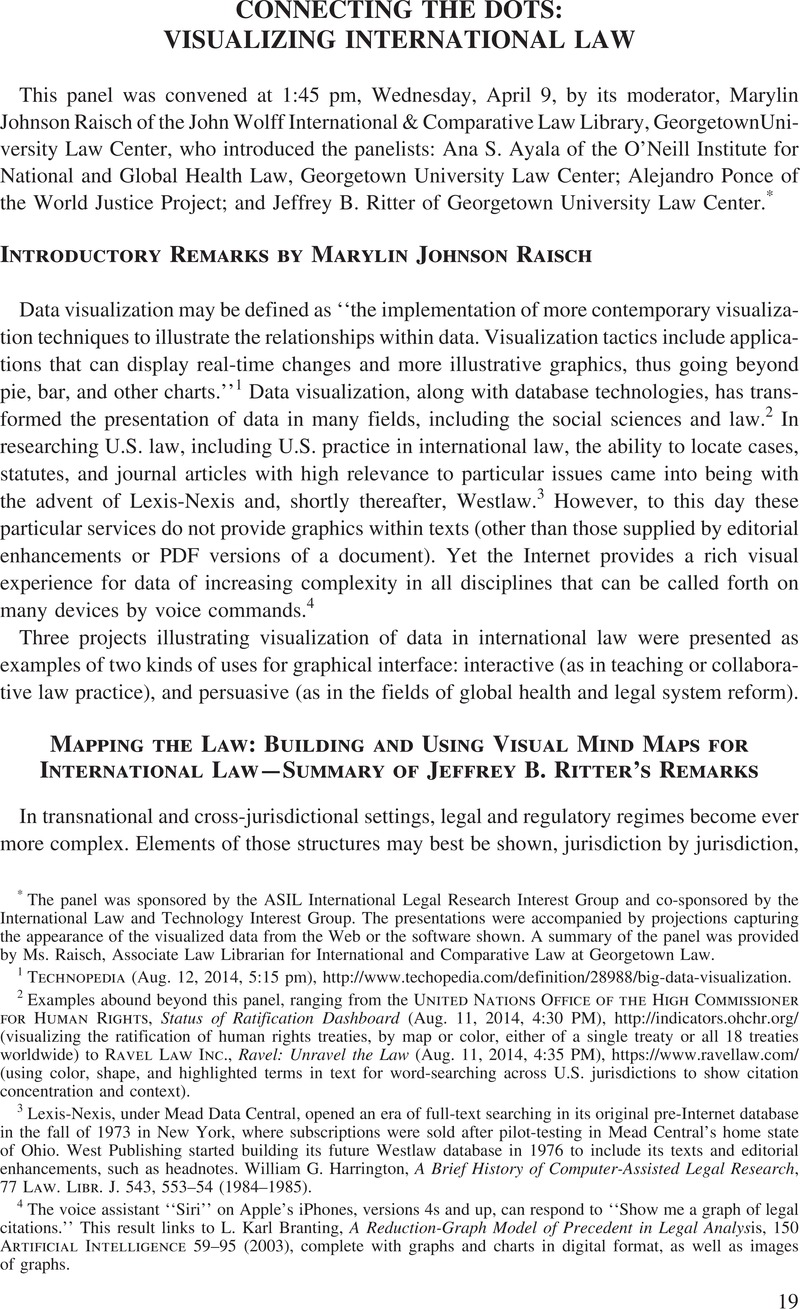No CrossRef data available.
Article contents
Introductory Remarks by Marylin Johnson Raisch
Published online by Cambridge University Press: 20 January 2017
Abstract

- Type
- Connecting the Dots: Visualizing International Law
- Information
- Copyright
- Copyright © American Society of International Law 2015
References
* The panel was sponsored by the ASIL International Legal Research Interest Group and co-sponsored by the International Law and Technology Interest Group. The presentations were accompanied by projections capturing the appearance of the visualized data from the Web or the software shown. A summary of the panel was provided by Ms. Raisch, Associate Law Librarian for International and Comparative Law at Georgetown Law.
1 Technopedia (Aug. 12, 2014, 5:15 pm), http://www.techopedia.com/definition/28988/big-data-visualization.
2 Examples abound beyond this panel, ranging from the United Nations Office of the High Commissioner for Human Rights, Status of Ratification Dashboard (Aug. 11, 2014, 4:30 PM), http://indicators.ohchr.org/ (visualizing the ratification of human rights treaties, by map or color, either of a single treaty or all 18 treatiesworldwide) to Ravel Law Inc., Ravel: Unravel the Law (Aug. 11, 2014, 4:35 PM), https://www.ravellaw.com/ (using color, shape, and highlighted terms in text for word-searching across U.S. jurisdictions to show citationconcentration and context).
3 Lexis-Nexis, under Mead Data Central, opened an era of full-text searching in its original pre-Internet databasein the fall of 1973 in New York, where subscriptions were sold after pilot-testing in Mead Central’s home stateof Ohio. West Publishing started building its future Westlaw database in 1976 to include its texts and editorialenhancements, such as headnotes. Harrington, William G., A Brief History of Computer-Assisted Legal Research, 77 Law. Libr. J. 543, 553–54 (1984–1985)Google Scholar.
4 The voice assistant “Siri” on Apple’s iPhones, versions 4s and up, can respond to “Show me a graph of legalcitations.” This result links to Branting, L. Karl, A Reduction-Graph Model of Precedent in Legal Analysis, 150 Artificial Intelligence 59–95 (2003)CrossRefGoogle Scholar, complete with graphs and charts in digital format, as well as imagesof graphs.




